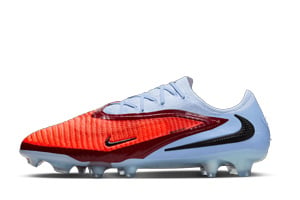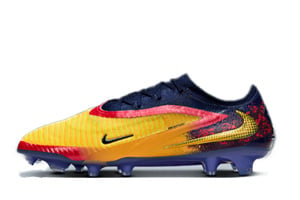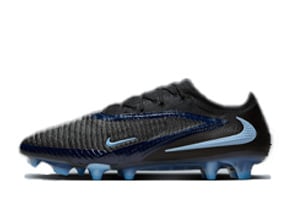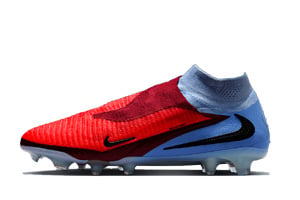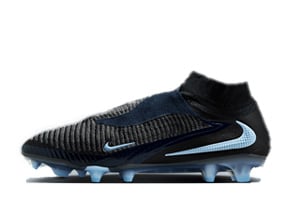The Phantom carries decades worth of Nike football boot evolution with a genealogical connection to past iconic power and control silos like the T90, Hypervenom, CTR Maestri, and the Magista Obra.
Tracing further the Phantom tree line, the Nike Phantom 6 succeeded the Phantom GX and the Phantom GT, which rolled the VNM and the VSN into one.
What You’ll Find On This Page:
- Elite Phantom 6 Review
- Phantom 6 DF Elite
- Phantom GX 2 Pro
- Your Academy Luna/GX 2 Expert Review
- Nike Phantom Club
- History of the Nike Phantom
Your Phantom GX II Questions Answered:
What are Nike Phantoms designed for?
The Nike Phantom football boots are designed for the technical players and playmakers, mostly worn by midfielders as they are the ones who initiate and dictate the passage of play. But even those up front are into the Phantom, especially those who create and provide goal scoring opportunities in advanced roles.
Which is better Mercurial or Phantom?
Both are actually great football boots (not playing it safe here!). One becomes better depending on one’s preferences and foot shape. That’s why I like providing these kind of reviews, for you to know more about the boots so you can understand yourself better what will suit you. If you want a full breakdown read this article I wrote on them.
Nike Phantom 6 Elite Review
| Model | Quality | Pitches | |
|---|---|---|---|
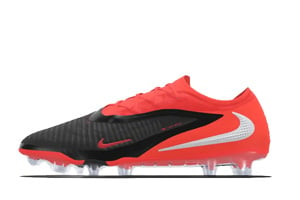 Nike By You |  Gripknit & Flyknit upper Cyclone 360 Outsole |  | 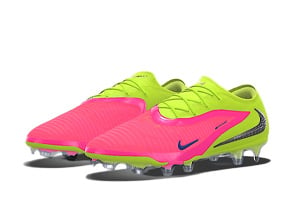 >> Get Nike By You Phantom 6 Low at Nike >> Get Nike By You Phantom 6 Low at Nike |
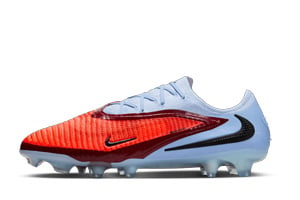 Scary Good |  | 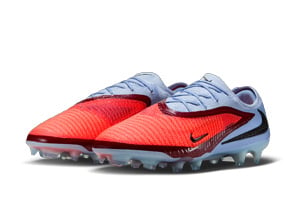 >> Get Scary Good Phantom 6 Low at Nike >> Get Scary Good Phantom 6 Low at Nike | |
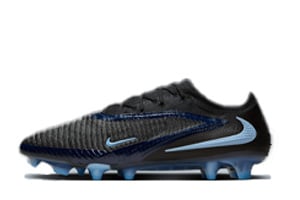 Shadow | 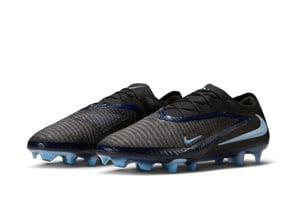 >> Get Shadow Phantom 6 Low at Nike >> Get Shadow Phantom 6 Low at Nike | ||
 EH Signature |  |  >> Get EH Phantom 6 Low at Nike >> Get EH Phantom 6 Low at Nike | |
 Launch Colourway |  >> Get Elite Phantom 6 Low at Nike >> Get Elite Phantom 6 Low at Nike | ||
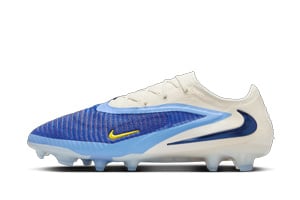 Fear Nothing |  | 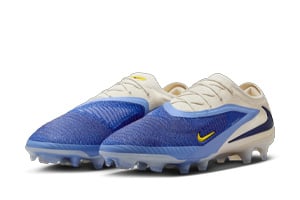 >> Get Fear Nothing Phantom 6 Low at Nike >> Get Fear Nothing Phantom 6 Low at Nike | |
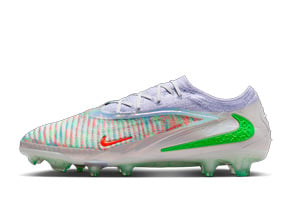 EA Sports Low | 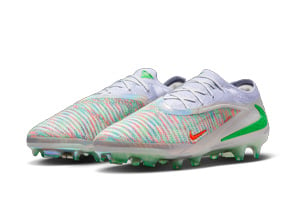 >> Get Fear Nothing Phantom 6 Low at Nike >> Get Fear Nothing Phantom 6 Low at Nike |
Latest Colours
Five Things You’ll Want to Know:
- Can be considered as a competitor to the adidas Predator
- Comes with asymmetrical lacing system
- Two-layer Gripknit upper comprised of outer shell of sticky coated yarns and inner base layer, all in a knitted base material
- Comes with collared and low-cut variants
- Marketed as Nike’s control option; sold together with the speedy Mercurial and the heritage Tiempo
My 2025 Phantom 6 Expert Review


Judging the boot on its own, the Nike Phantom 6 is one of those that deliver you that grippy feel on the ball, which is perfect if you need something extra ball control for dribbling, crossing, shooting from a distance and first touch. The two-layer tuned Gripknit upper indeed has that sticky, waxy sensation and has a firmer, denser strike zone ribs for added power. It’s a nice little feature, but I think it’s something we can live without.
As I’ve mentioned, the upper is two-layered. I think the combination of an inner Flyknit and an outer shell of Gripknit created a malleable upper that still has its structure. Some might welcome the increase in lockdown and responsiveness, but others might miss the magical softness of the previous GX generations. The incorporated ribbings on the weave of the Gripknit tones the grip down a bit relative to the GX 1 and GX 2. I can see how some would like the optimised grip and how a certain section would long for the uber-grip of the previous Phantoms.


I personally like the balance of the Cyclone 360 stud configuration, with the blades on the forefoot and few on the rear giving that bite on ground while the conicals do the work for the twists and pivots. I think everyone can agree though that the extra conicals toward the midfoot does resolve the stud pressure complaint a few have experienced on the old GXs. Where others might disagree again is the stiffened midfoot, which is good for objective performance but a slight decrease on comfort.


If the Mercs are trending to become wider and more accommodating, the Phantom 6, while still primarily a wide-boot, is now trying to appeal to the opposite foot-shapes. The structure of the upper itself already tends to compress the fit and feel, as opposed to the more relaxed wrap of the GXs. But the real kicker here is the more secured heel fit and the true-to-size length. Those coming from the GX 1 and GX 2 might find the Phantom 6 a bit tighter, if not outright tight.
Conclusion
The Phantom 6 is a nice control boot option that has a balance between structure and pliability as well as an optimised grip. There are those that would definitely miss the defined bias of the previous phantoms toward uber-sticky grippiness and wide-fitting profiles. But I believe the move of the Phantom 6 toward the centre-from responsiveness/comfort to fit and feel, will help the boot attract more wearers beyond its usual base of players.
How I Conducted The Review Of The Nike Phantom 6
I’ve spent plenty of time training & playing in the Phantoms, like my other boot reviews, this Phantom 6 review followed some guidelines that the team thinks is necessary for boot testing. Besides the usual running and movement drills, I subjected the Phantom to more shooting and passing tests.
This is necessary to see if Gripknit does really make a difference to your ball touch and grip, especially as we have the adidas Predator dominating in this category with its own grip elements. To eliminate any possible shooting or passing issue due to lack of fit or lockdown (and therefore decreased responsiveness), I was chosen to lead the review since I have a wide-foot shape.
Phantom 6 High Elite
Nike Phantom 6 High is essentially the same boot as the Phantom 6 low-cut. At this point, the difference between the two should be easy to tell. The Phantom 6 High features a high-cut sock, dynamic fit collar, which I find is there for looks than performance, leaving the regular Phantom 6 Elite as the low-cut option. This distinction is basically the Superfly/Vapor of the Mercurials applied in the Phantom line.
| Model | Quality | Pitches | |
|---|---|---|---|
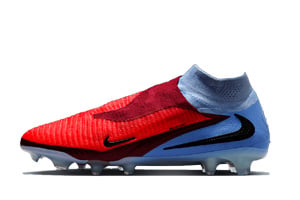 Scary Good |  Gripknit & Flyknit upper Cyclone 360 Outsole |  |  >> Get Elite Phantom 6 High at Nike >> Get Elite Phantom 6 High at Nike |
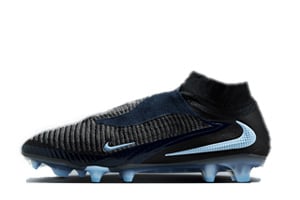 Shadow | 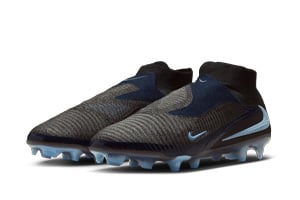 >> Get Elite Phantom 6 High at Nike >> Get Elite Phantom 6 High at Nike | ||
 Launch Colourway |  >> Get Elite Phantom 6 High at Nike >> Get Elite Phantom 6 High at Nike | ||
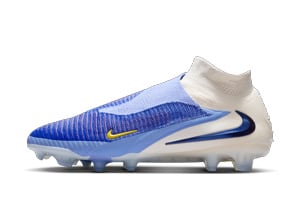 Fear Nothing |  | 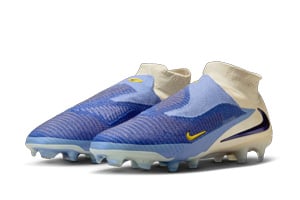 >> Get Elite Phantom 6 High at Nike >> Get Elite Phantom 6 High at Nike | |
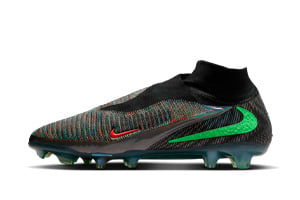 EA Sports High | 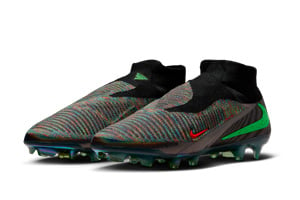 >> Get Elite Phantom 6 High at Nike >> Get Elite Phantom 6 High at Nike |
Other thing to point out though is that the DF also has the Ghost Lacing system back. It might clean up the look and the striking surface, but personally I prefer not having it as the cover gives me a bit of a hard time when adjusting the laces.
Phantom 6 Pro
| Model | Quality | Pitches | Linkout |
|---|---|---|---|
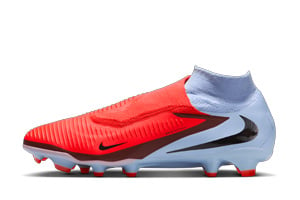 Scary Good High |  VNMSkin with Flyknit Upper |  |  >> Get Phantom 6 Pro High at Nike >> Get Phantom 6 Pro High at Nike |
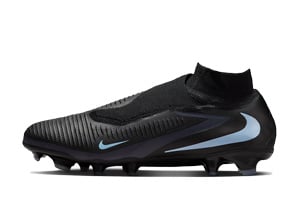 Shadow High | 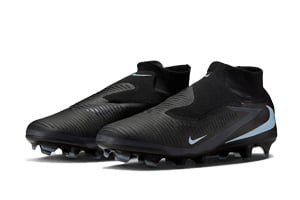 >> Get Phantom 6 Pro High at Nike >> Get Phantom 6 Pro High at Nike | ||
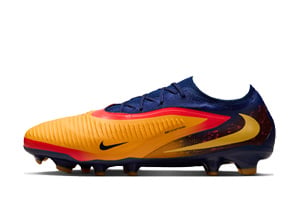 EH Signature |  | 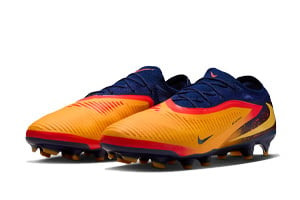 >> Get Phantom 6 Pro Low at Nike >> Get Phantom 6 Pro Low at Nike | |
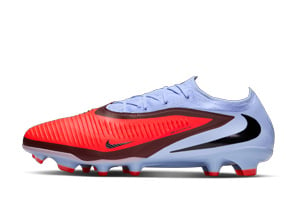 Scary Good Low | 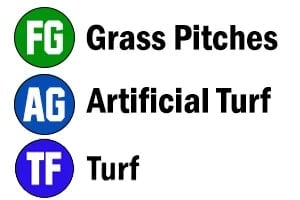
| 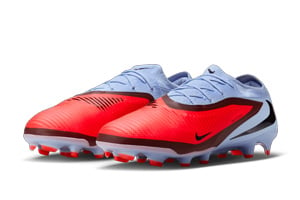 >> Get Phantom 6 Pro Low at Nike >> Get Phantom 6 Pro Low at Nike | |
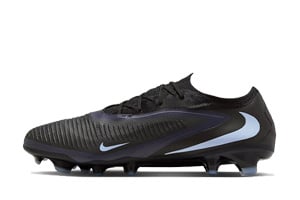 Shadow Low | 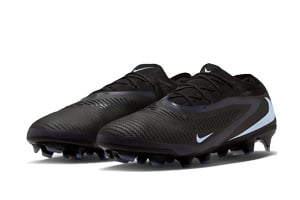 >> Get Phantom 6 Pro High at Nike >> Get Phantom 6 Pro High at Nike |
If you find the Elite model a bit too pricey and don’t really need all that extra grip, the Pro version might be a better fit. Instead of Gripknit, it uses a mesh-based upper with a plastic overlay. You still get some ribbed texturing, and thanks to the natural stickiness of the plastic film, it offers a touch of that Elite-like grip—just not quite to the same level. The upper feels more pliable and comfortable, though it can lean toward the flimsy side, which might not suit players looking for maximum responsiveness. That same comfort-focused approach carries over to the outsole as well, with a forefoot that’s noticeably more flexible—great for comfort, less so for sharp, snappy movements.
Last feels the same in that length-wise you are better served going true-to-size, plus you get that extra room in height for the toe box. I think though that narrow feet players might find the Pro wider simply because the upper has more give than its flagship Elite sibling.
Academy Phantom 6 Expert Review
| Model | Quality | Pitches | Linkout |
|---|---|---|---|
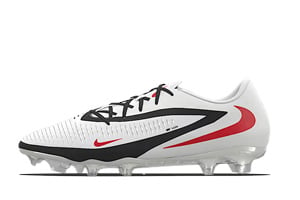 Nike By You |  NikeSkin Upper |  | 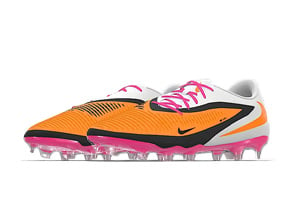 >> Get Phantom 6 Academy Low at Nike >> Get Phantom 6 Academy Low at Nike |
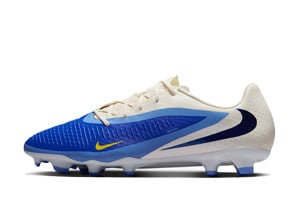 Fear Nothing | 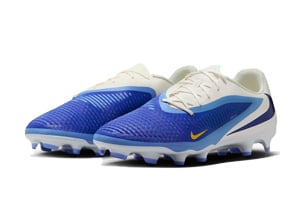 >> Get Phantom 6 Academy Low at Nike >> Get Phantom 6 Academy Low at Nike | ||
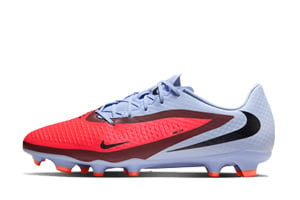 Scary Good Low | 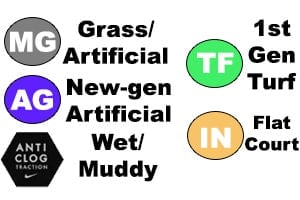
| 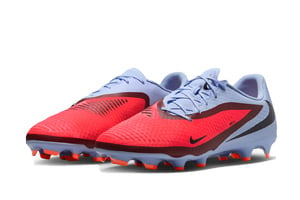 >> Get Phantom 6 Academy High at Nike >> Get Phantom 6 Academy High at Nike | |
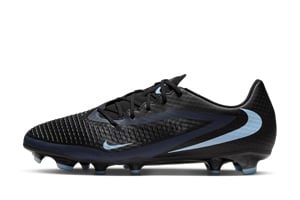 Shadow Low | 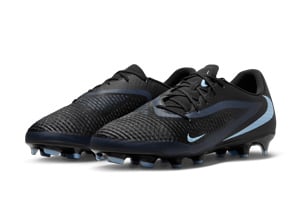 >> Get Phantom 6 Academy Low at Nike >> Get Phantom 6 Academy Low at Nike | ||
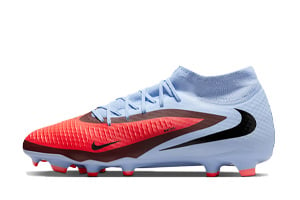 Scary Good High | 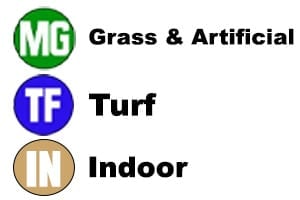
| 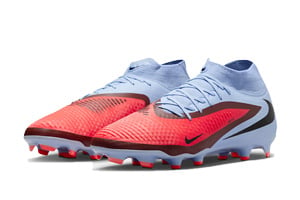 >> Get Phantom 6 Academy High at Nike >> Get Phantom 6 Academy High at Nike | |
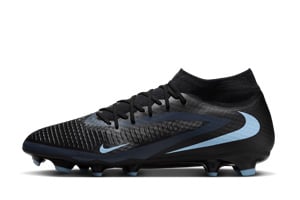 Shadow High | 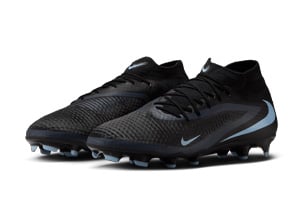 >> Get Phantom 6 Academy High at Nike >> Get Phantom 6 Academy High at Nike | ||
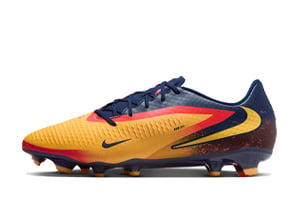 Erling Haaland Signature | 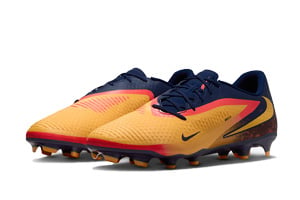 >> Get Phantom 6 Academy Low at Nike >> Get Phantom 6 Academy Low at Nike | ||
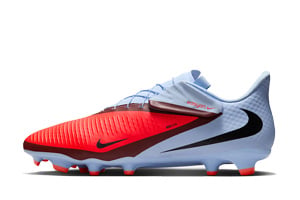 Easy-On |  NikeSkin Upper with Velcro Strap Lacing and Bendable Heel |  | 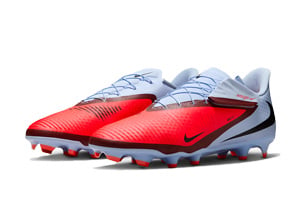 >> Get Phantom 6 Academy Low at Nike >> Get Phantom 6 Academy Low at Nike |
When it comes to the budget-friendly Academy Phantoms, the difference in quality is pretty noticeable. The materials feel cheap and lack any real structure, which isn’t ideal for serious play—but they’re totally fine for casual football, beginners, or kids who just want something comfy to wear. On top of that, at this level you also find the EasyOn version, which has a bendable heel and a pull-on, velcro-strapped laced closure. As your game and physicality improve, though, it’s definitely worth looking into the higher-tier models for better support and performance.
Surprisingly, the Academy version does have a bit of tackiness in the ribbed upper, even more than the Pro when it comes to mimicking Gripknit. It skips the Ghost lacing cover but keeps a bit of Flyknit around the collar for a softer feel. The soleplate is the same one found on the Pro—marketed as multiground—but the bladed studs can still feel a bit too aggressive on some artificial turf, so just be mindful of that.
Academy Phantom is quite different around the toe box because it does feel low and pointy. I would consider going a quarter to half-a-size up if you want more room for your toes.
Nike Phantom Club
| Model | Quality | Pitches | Linkout |
|---|---|---|---|
 Scary Good High |  Textile Synthetic Upper | 
| 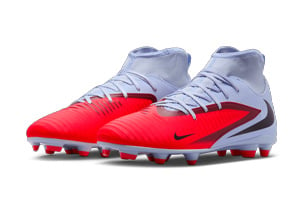 >> Get Phantom 6 Club High at Nike >> Get Phantom 6 Club High at Nike |
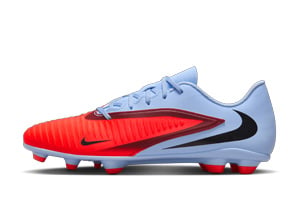 Scary Good Low | 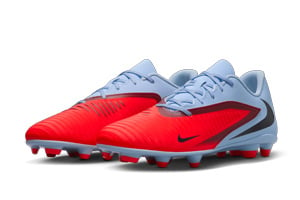 >> Get Phantom 6 Club Low at Nike >> Get Phantom 6 Club Low at Nike | ||
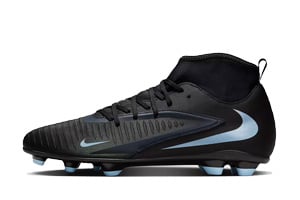 Scary Good High | 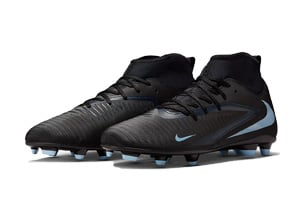 >> Get Phantom 6 Club High at Nike >> Get Phantom 6 Club High at Nike | ||
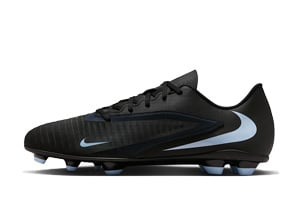 Shadow Low | 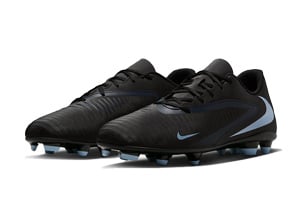 >> Get Phantom 6 Club Low at Nike >> Get Phantom 6 Club Low at Nike |
Like other Nike Club takedowns, you get a generic-fitting, synthetic boot that is made to look like the Phantom 6 Elite. It’s as basic as you can get-an upper and an outsole. A pair of the Phantom 6 Club is great placeholder especially for young players, who would eventually need to upgrade to the Academy at the very least. If you want the collar, you also get a cheap execution of it here at the Club. With that said, I would consider the Academy as the viable starting point for your Phantom football boots and skip the Club altogether.
History of the Nike Phantom
The Nike Phantom has gone a long way since its inception in 2013. Take a look at the silo’s development over the years and how arrived to this point with the Phantom GX.
Hypervenom Phantom I (2013)


Successfully replacing the iconic T90 was a tall order, but Nike did just that with the Hypervenom Phantom in 2013. It introduced a ‘new breed of attack’ by moving on from the tanky build of the former in favour of a soft and honeycombed Nikeskin mesh upper and a lightweight feel. The nimble and deft Neymar headlined the boot, and effectively epitomised what the boot stood for-skills and agility are as important as strength and power.
Hypervenom Phantom II (2015)


Not many will fondly remember the Hypervenom Phantom II. It was thought of as a massive disappointment-comfort suffered a lot because of the stiffer upper and too much lockdown from the reinforcing Flywire cables.
Pros were so unhappy that Nike moved back to the Nikeskin upper material in 2016, starting with the Hypervenom Phantom II in the Spark Brilliance pack. The DF-collared and low-cut offerings in the Phantom line first appeared in the Hypervenom II, with Nike calling the uncollared variant the Hypervenom Phinish.
Hypervenom Phantom III (2017)


Flyknit featured fully for the first time in the silo’s history with the 2017 Hypervenom Phantom III. This was also where Nike decided to simply name the collared model DF and the low-cut as simply Hypervenom Phantom.
The standout feature was the texturing on the upper that hardened upon impact, adding power without necessarily stiffening the upper. Hypervenom Phantom III was an acceptable change, though it did not reach the height of the OG release.
Phantom VSN (2018)


Replacing the Magista (which in turn succeeded the CTR Maestri), the Phantom VSN introduced the concept of control to the Phantom line in 2018. It later coexisted with the Phantom VNM at some point, kind of presenting themselves as control-power twin of the silo.
The boot had a Flyknit covering the internal Quadfit case (its primary source of lockdown), a ghost lacing cover to clean up the striking surface and a Hyperscreen coating on the upper to carry out minitexturing essential for ball touch.
The changes in the VSN II released in 2020 were minimal, such as the external heel clip, lower collar and revised Hyperscreen divisions, and not enough to change the essence of the boot. Under the Future DNA pack, the VSN effectively brought back the black and citrus launch colourway of the Hypervenom Phantom.
Phantom VNM (2019)


With the VNM in 2019, the Phantom carried on with its power roots despite the existence of the VSN at that time. The Flyknit boot was instantly recognisable with its ridged Precision PWR Zone on the instep, clearly invoking the spirit of the T90 series.
The VNM suited up with the classic black and white look of the T90 II in the Future DNA pack. Assisting the lockdown of the boot were the integrated Flywire cables. Both the VNM and the VSN gave way to the Phantom GT in 2020.
Phantom GT (2020)


Phantom GT started during the COVID year and was known for the ‘Generative Texture‘ on its Flyknit upper that aided ball grip and control. The open-arched Hyperquick tooling was targeted on stability when moving and landing side-to-side.
The only difference between the GT 1 and the GT 2 a year later was the change of the Generative Texture from a micro-pill shape with varying intensities and concentrations to a generic, all-over chevron one.
Phantom GX (2022)


Nike Phantom GX made a splashing debut in 2022 as it started appearing in the knockout stages of the Qatar World Cup. GX brought the sticky Gripknit to the football boot world and provided some formidable challenge to the dominance of the adidas Predator in the grip/control department.
Phantom Luna (2023)


Nike’s football boot ‘By her, For her.’ The Luna was released as the brand’s dedicated boot for women’s football around the 2023 Women’s World Cup and also applied the Gripknit upper technology in a fit and style that catered well to its target audience.
It had the Cyclone 360 outsole that placed some blades in a circular formation on the forefoot for better rotational traction, that was used also on the GX 2. Read more about the Phantom Luna here.
Phantom GX II (2024)


For some reason, Nike decided to collapse the Luna and GX as the high-cut/low-cut option for the Phantom GX II. With it soft, grippy one-piece Gripknit upper and the same Cyclone 360-stud configuration, the GX II still performed well, both on-pitch and boot fans’ reception. The only thing was it somehow undermined the release of the Luna as a dedicated women’s boot.

